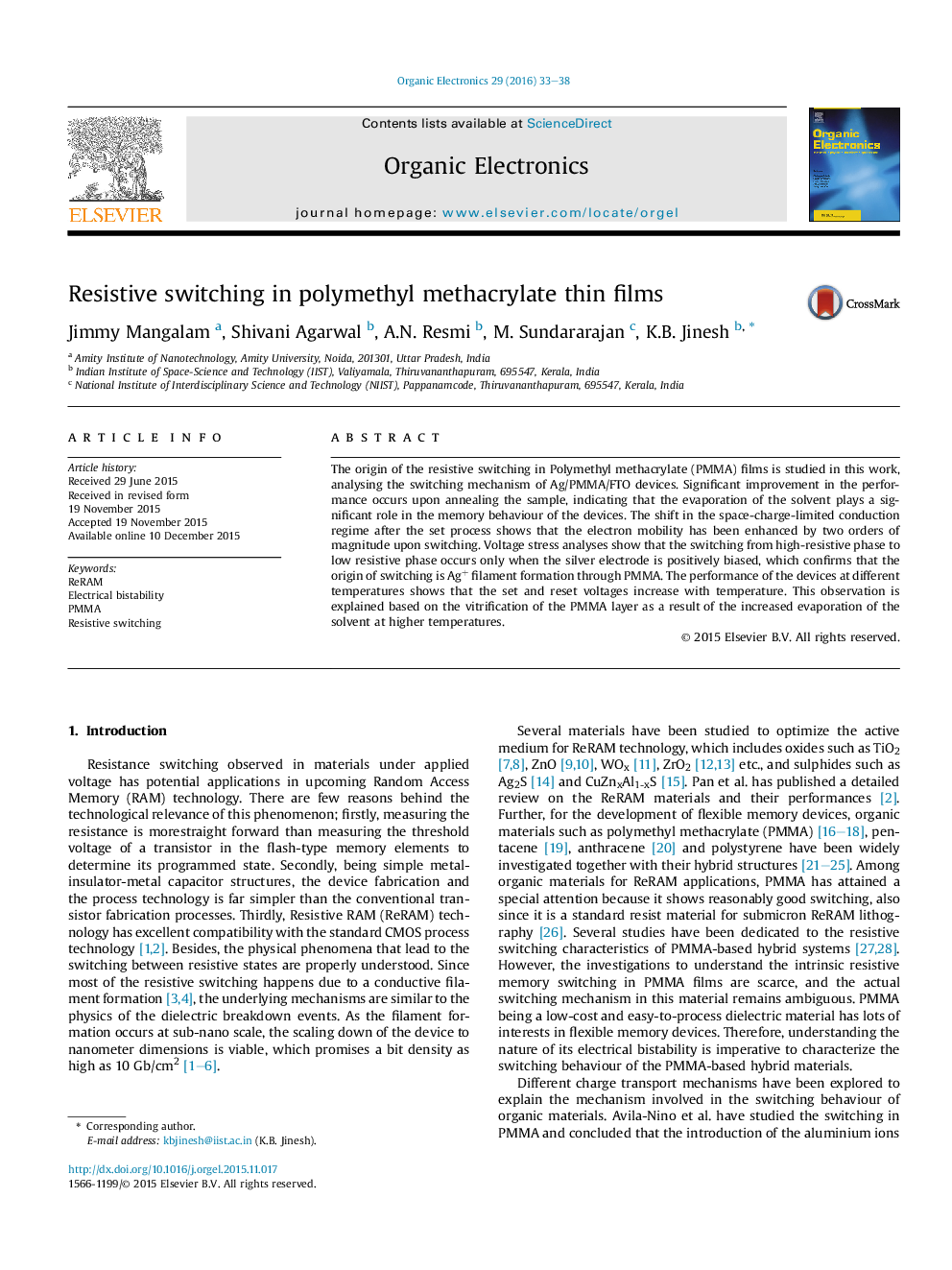| کد مقاله | کد نشریه | سال انتشار | مقاله انگلیسی | نسخه تمام متن |
|---|---|---|---|---|
| 1264258 | 1496828 | 2016 | 6 صفحه PDF | دانلود رایگان |
• Switching performance of the PMMA devices improves upon annealing the sample, due to solvent evaporation.
• This strongly indicates the vitrification of the PMMA layer as a result of the solvent evaporation upon annealing.
• The basic mechanism underlying the switching in PMMA is identified as the Ag+ filament formation.
• The write–erase cycle performance of the PMMA device was tested by applying a square pulse with peak at ±2 V and measuring the corresponding current.
• Due to the vitrification of the film, the switching voltages of the PMMA devices shift to higher voltages at increasing temperatures.
The origin of the resistive switching in Polymethyl methacrylate (PMMA) films is studied in this work, analysing the switching mechanism of Ag/PMMA/FTO devices. Significant improvement in the performance occurs upon annealing the sample, indicating that the evaporation of the solvent plays a significant role in the memory behaviour of the devices. The shift in the space-charge-limited conduction regime after the set process shows that the electron mobility has been enhanced by two orders of magnitude upon switching. Voltage stress analyses show that the switching from high-resistive phase to low resistive phase occurs only when the silver electrode is positively biased, which confirms that the origin of switching is Ag+ filament formation through PMMA. The performance of the devices at different temperatures shows that the set and reset voltages increase with temperature. This observation is explained based on the vitrification of the PMMA layer as a result of the increased evaporation of the solvent at higher temperatures.
Figure optionsDownload as PowerPoint slide
Journal: Organic Electronics - Volume 29, February 2016, Pages 33–38
